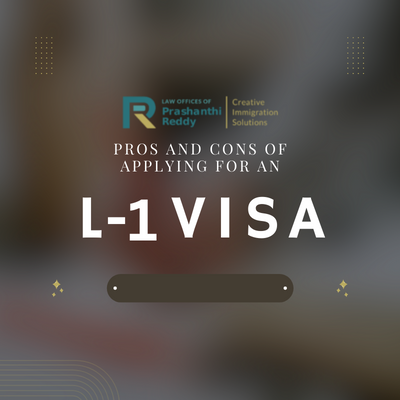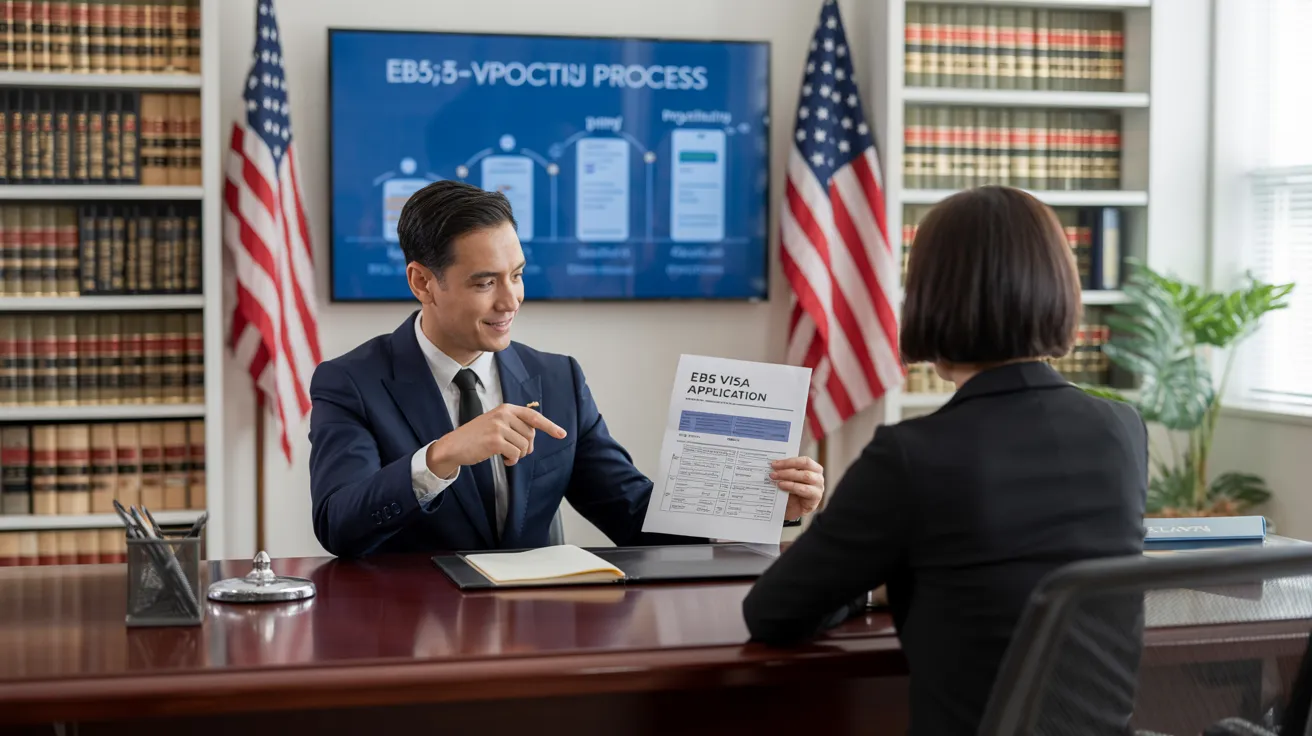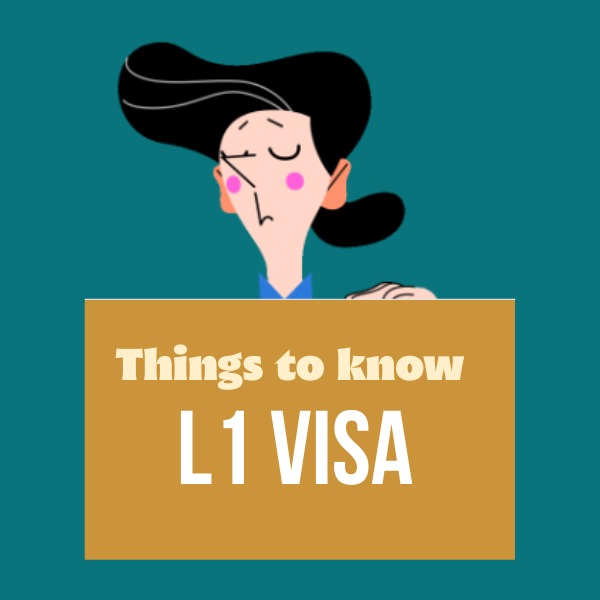L1 Visa Fundamentals Explained
Table of ContentsRumored Buzz on L1 VisaHow L1 Visa can Save You Time, Stress, and Money.A Biased View of L1 VisaL1 Visa Can Be Fun For AnyoneNot known Details About L1 Visa 7 Simple Techniques For L1 Visa
Available from ProQuest Dissertations & Theses Worldwide; Social Scientific Research Costs Collection. (2074816399). (PDF). Congress. (PDF). DHS Office of the Inspector General. (PDF). (PDF). "Nonimmigrant Visa Stats". Fetched 2023-03-26. Department of Homeland Safety And Security Workplace of the Assessor General, "Review of Susceptabilities and Prospective Misuses of the L-1 Visa Program," "A Mainframe-Size Visa Loophole".
U.S. Division of State. Recovered 22 August 2016. "Employees paid $1.21 an hour to mount Fremont tech business's computer systems". The Mercury News. 2014-10-22. Fetched 2023-02-08. Costa, Daniel (November 11, 2014). "Obscure temporary visas for foreign tech workers dispirit earnings". The Hill. Tamen, Joan Fleischer (August 10, 2013). "Visa Owners Change Workers".
L1 Visa Fundamentals Explained
In order to be qualified for the L-1 visa, the international firm abroad where the Beneficiary was utilized and the U.S. business should have a qualifying partnership at the time of the transfer. The different sorts of qualifying relationships are: 1. Parent-Subsidiary: The Parent implies a company, firm, or various other lawful entity which has subsidiaries that it possesses and controls."Subsidiary" indicates a firm, firm, or other legal entity of which a moms and dad possesses, directly or indirectly, more than 50% of the entity, OR has less than 50% but has management control of the entity.
Instance 1: Business A is included in France and utilizes the Recipient. Firm B is included in the U.S. and intends to petition the Recipient. Company An owns 100% of the shares of Business B.Company A is the Moms And Dad and Business B is a subsidiary. Consequently there is a qualifying connection in between the 2 business and Firm B need to have the ability to fund the Beneficiary.
Company An owns 40% of Business B. The remaining 60% is possessed and regulated by Company C, which has no connection to Firm A.Since Business A and B do not have a parent-subsidiary connection, Firm A can not sponsor the Recipient for L-1.
Business A has 40% of Business B. The continuing to be 60% is owned by Business C, which has no relation to Business A. Nonetheless, Firm A, by official agreement, controls and full manages Business B.Since Business An owns much less than 50% of Business B however manages and controls the business, there is a qualifying parent-subsidiary relationship and Business A can fund the Beneficiary for L-1.
Fascination About L1 Visa
Affiliate: An affiliate is 1 of 2 subsidiaries thar are both had and regulated by the same moms and dad or individual, or owned and controlled by the same team of individuals, in basically the very same ratios. a. Example 1: Business A is integrated in Ghana and employs the Beneficiary. Business B is incorporated in the united state
Company C, also included in Ghana, possesses 100% of Company A and 100% of Company B.Therefore, Company A and Firm B are "affiliates" or sister firms and a certifying connection exists in between both companies. Firm B learn more should have the ability to sponsor find out more the Beneficiary. b. Example 2: Company A is integrated in the united state
Firm A is 60% possessed by Mrs. Smith, 20% possessed by Mr. Doe, and 20% had by Ms. Brown. Business B is included in Colombia and presently utilizes the Recipient. Company B is 65% owned by Mrs. Smith, 15% owned by Mr. Doe, and 20% owned by Ms. Brown. Firm A and Business B are affiliates and have a qualifying relationship in two various methods: Mrs.
The L-1 visa is an employment-based visa classification established by Congress in 1970, allowing international business to transfer their supervisors, execs, or vital workers to their U.S. procedures. It is generally referred to as the intracompany transferee visa. There are 2 major sorts of L-1 visas: L-1A and L-1B. These types are ideal for staff members worked with in different settings within a company.

Additionally, the recipient has to have worked in a supervisory, exec, or specialized staff member setting for one year within the three years coming before the L-1A application in the international business. For new workplace applications, international work has to have been in a managerial or executive capacity if the beneficiary is concerning the United States to work as a manager or executive.
The Basic Principles Of L1 Visa

If granted for an U.S. firm operational for even more than one year, the initial L-1B visa is for approximately 3 years and can be prolonged for an added two years (L1 Visa). Conversely, if the united state company is recently established or has been operational for less than one year, the first L-1B visa is provided for one year, with extensions available in two-year increments
The L-1 visa is an employment-based visa category developed by Congress in 1970, allowing international firms to transfer their managers, executives, or essential employees to their U.S. operations. It is typically referred to as the intracompany transferee visa.
The 6-Second Trick For L1 Visa
Additionally, the recipient must have worked in a supervisory, exec, or specialized staff member position for one year within the 3 years coming before the L-1A application in the foreign business. For new workplace applications, international employment has to have remained in a managerial or executive capability if the recipient is involving the United States to function as a manager or executive.
for up to seven years to manage the operations of the U.S. affiliate as an exec or supervisor. If released for a united state business that has actually been operational for more than one year, the L-1A visa is initially approved for as much as three years and can be expanded in two-year increments.
If given for an U.S. firm functional for even more than one year, the first L-1B visa is for approximately 3 years and can be extended for an additional 2 years. On the other hand, if the U.S. firm is recently developed or has been operational for less than one year, the preliminary L-1B visa is issued for one year, with expansions readily available in two-year increments.